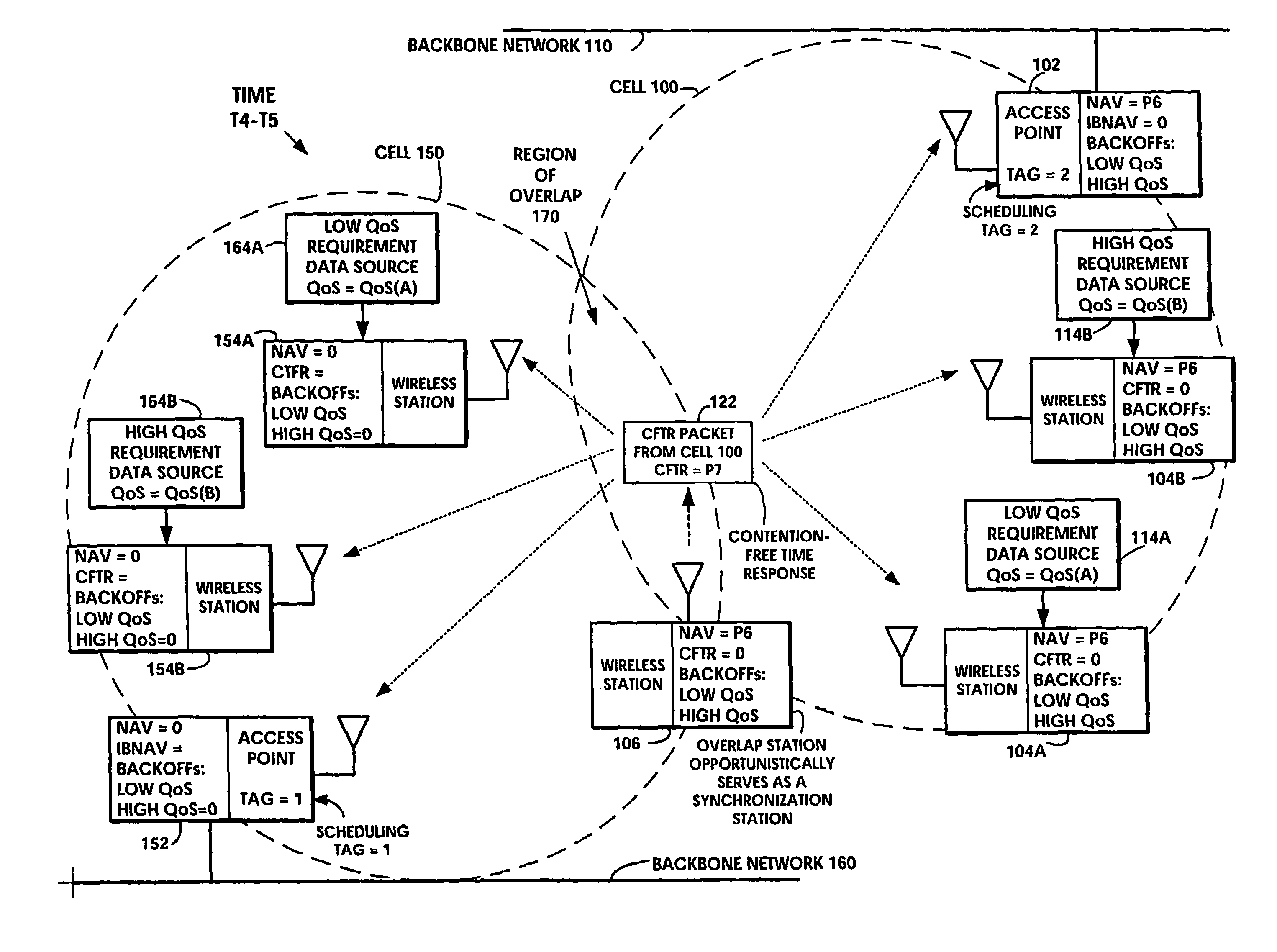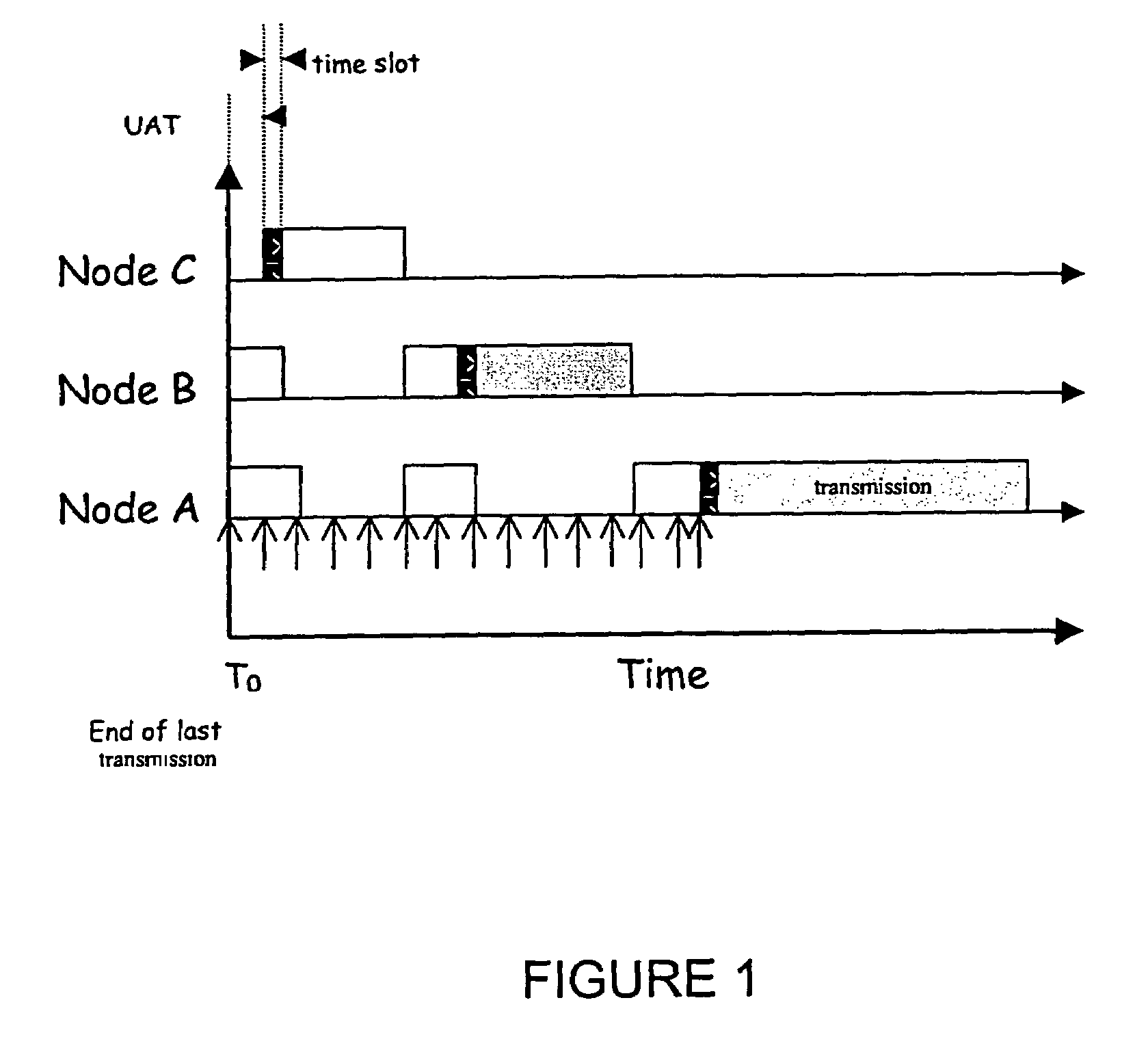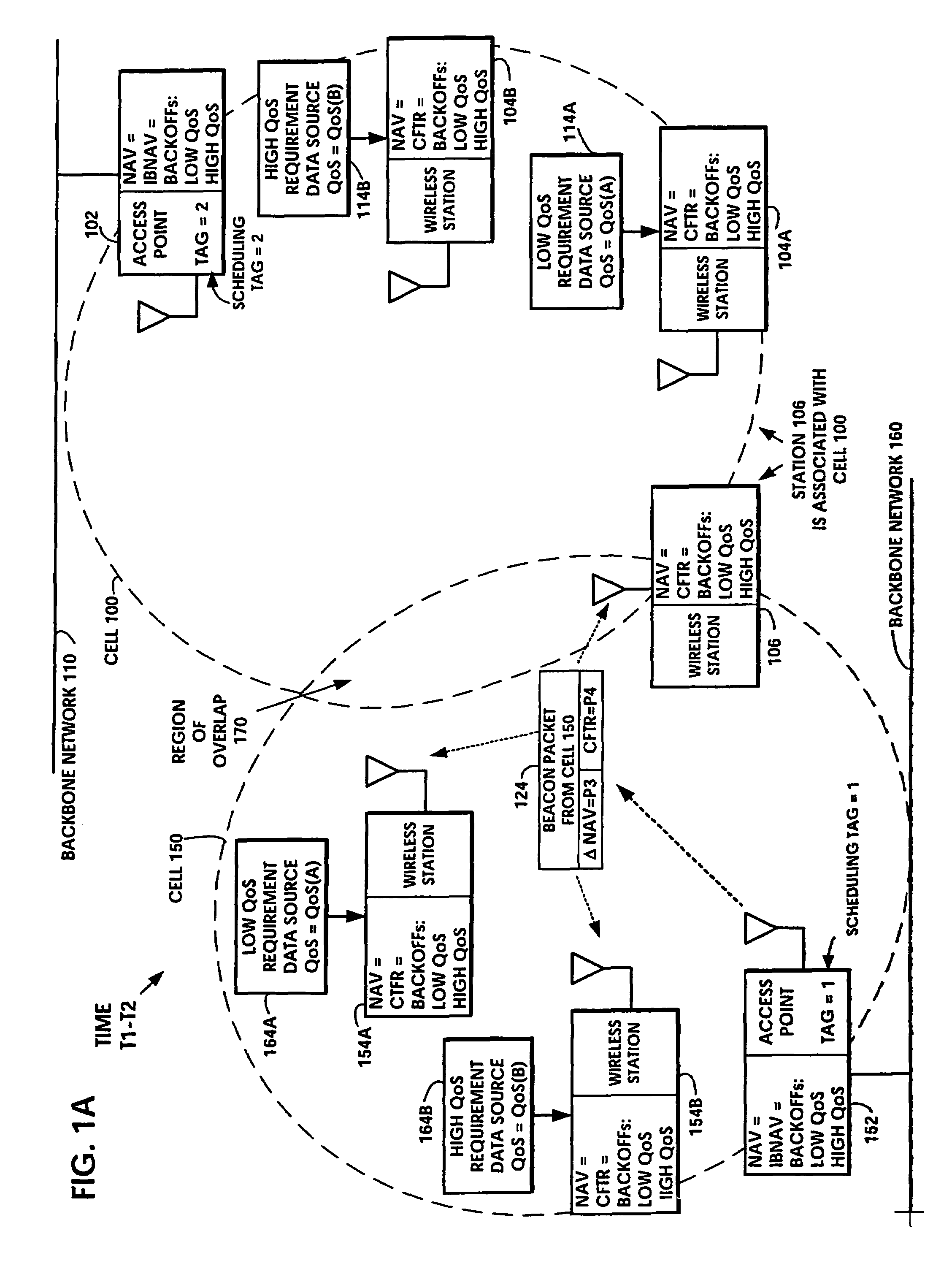Hybrid coordination function (HCF) access through tiered contention and overlapped wireless cell mitigation
a technology of coordination functions, applied in the field of telecommunications methods, can solve the problems of preventing back-to-back re-transmission, protocol instability, and hidden terminal problems, and achieve the effects of reducing the length of idle periods, reducing potential collisions, and reducing interference in a medium between overlapping wireless lan cells
- Summary
- Abstract
- Description
- Claims
- Application Information
AI Technical Summary
Benefits of technology
Problems solved by technology
Method used
Image
Examples
Embodiment Construction
[0072]The invention disclosed broadly relates to telecommunications methods and more particularly relates to Quality-of-Service (QoS) management in multiple access packet networks. Several protocols, either centralized or distributed can co-exist on the same channel through the Tiered Contention Multiple Access method. The proper arbitration time to be assigned to the centralized access protocol must satisfy the following requirements: (i) the centralized access protocol enjoys top priority access, (ii) once the centralized protocol seizes the channel, it maintains control until the contention-free period ends, (iii) the protocols are backward compatible, and (iv) Overlapping Basic Service Sets (OBSSs) engaged in centralized-protocol can share the channel efficiently.
[0073]In accordance with the invention, the Tiered Contention Multiple Access (TCMA) protocol is applied to wireless cells which have overlapping access points contending for the same medium. Quality of Service (QoS) su...
PUM
 Login to View More
Login to View More Abstract
Description
Claims
Application Information
 Login to View More
Login to View More - R&D
- Intellectual Property
- Life Sciences
- Materials
- Tech Scout
- Unparalleled Data Quality
- Higher Quality Content
- 60% Fewer Hallucinations
Browse by: Latest US Patents, China's latest patents, Technical Efficacy Thesaurus, Application Domain, Technology Topic, Popular Technical Reports.
© 2025 PatSnap. All rights reserved.Legal|Privacy policy|Modern Slavery Act Transparency Statement|Sitemap|About US| Contact US: help@patsnap.com



